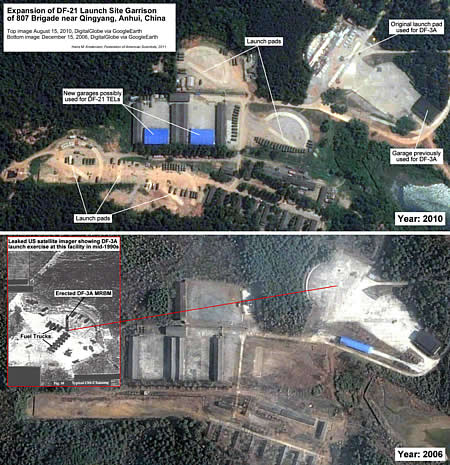Event: Conference on Using Satellite Imagery to Monitor Nuclear Forces and Proliferators
.
By Hans M. Kristensen
Earlier today we convened an exciting conference on use of commercials satellite imagery and Geographic Information Systems (GIS) to monitor nuclear forces and proliferators around the world. I was fortunate to have two brilliant users of this technology with me on the panel:
- Tamara Patton, a Graduate Research Assistant at the James Martin Center for Nonproliferation Studies, who described her pioneering work to use freeware to creating 3D images of uranium enrichment facilities and plutonium production reactors in Pakistan and North Korea. Her briefing is available here.
- Matthew McKinzie, a Senior Scientists with the Natural Resources Defense Council’s Nuclear Program and Lands and Wildlife Program, who has spearheaded non-governmental use of GIS technology since commercial satellite imagery first became widely available. His presentation is available here.
- My presentation focused on using satellite imagery and Freedom of Information Act requests to monitor Chinese and Russian nuclear force developments, an effort that is becoming more important as the United States is decreasing its release of information about those countries. My briefing slides are here.
In all of the work profiled by these presentations, the analysts relied on the unique Google Earth and the generous contribution of high-resolution satellite imagery by DigitalGlobe and GeoEye.
This publication was made possible by a grant from Carnegie Corporation of New York and Ploughshares Fund. The statements made and views expressed are solely the responsibility of the author.
Satellite imagery has long served as a tool for observing on-the-ground activity worldwide, and offers especially valuable insights into the operation, development, and physical features related to nuclear technology.
This report outlines a framework relying on “Cooperative Technical Means” for effective arms control verification based on remote sensing, avoiding on-site inspections but maintaining a level of transparency that allows for immediate detection of changes in nuclear posture or a significant build-up above agreed limits.
The grant comes from the Carnegie Corporation of New York (CCNY) to investigate, alongside The British American Security Information Council (BASIC), the associated impact on nuclear stability.
Satellite imagery of RAF Lakenheath reveals new construction of a security perimeter around ten protective aircraft shelters in the designated nuclear area, the latest measure in a series of upgrades as the base prepares for the ability to store U.S. nuclear weapons.
